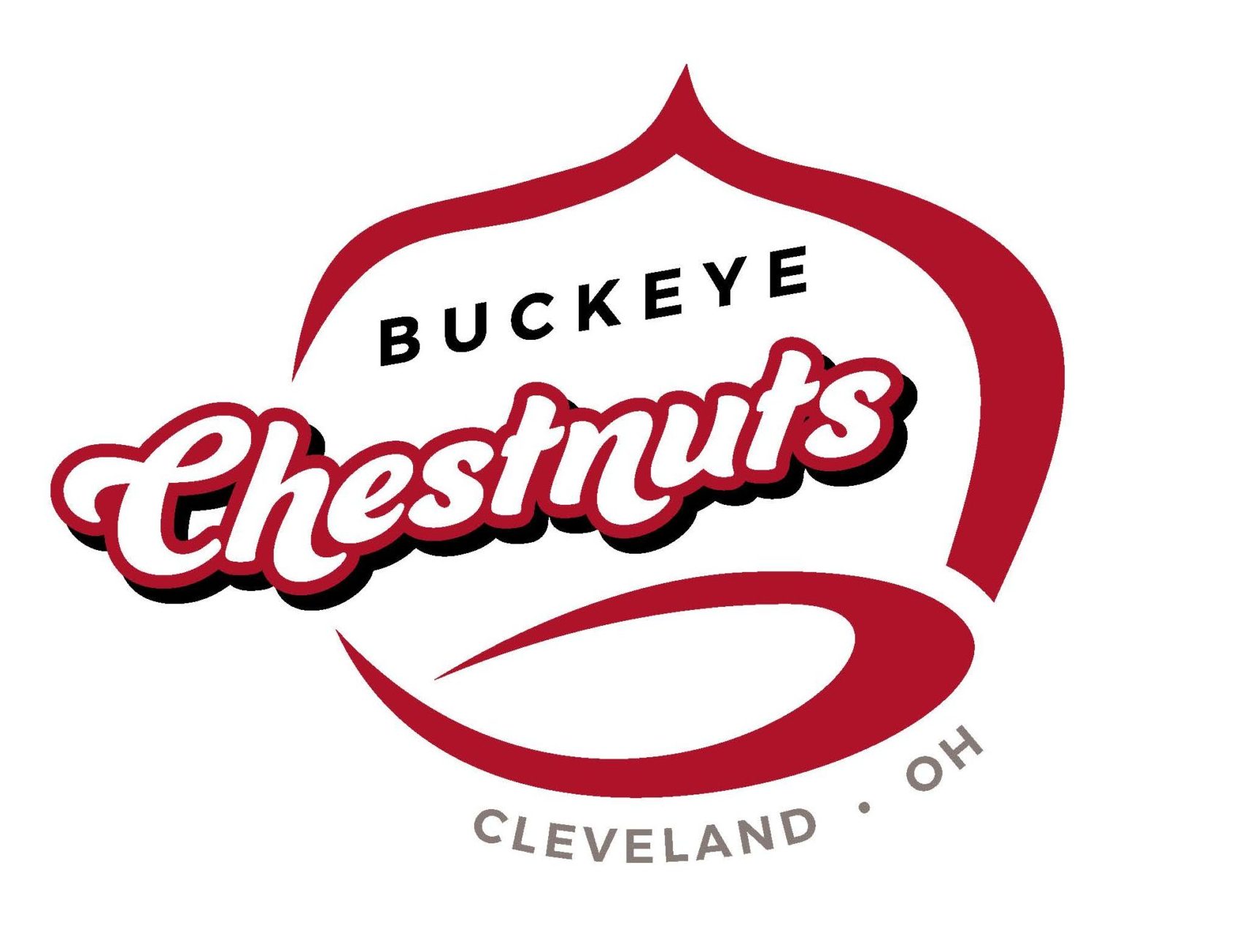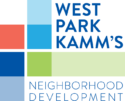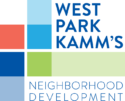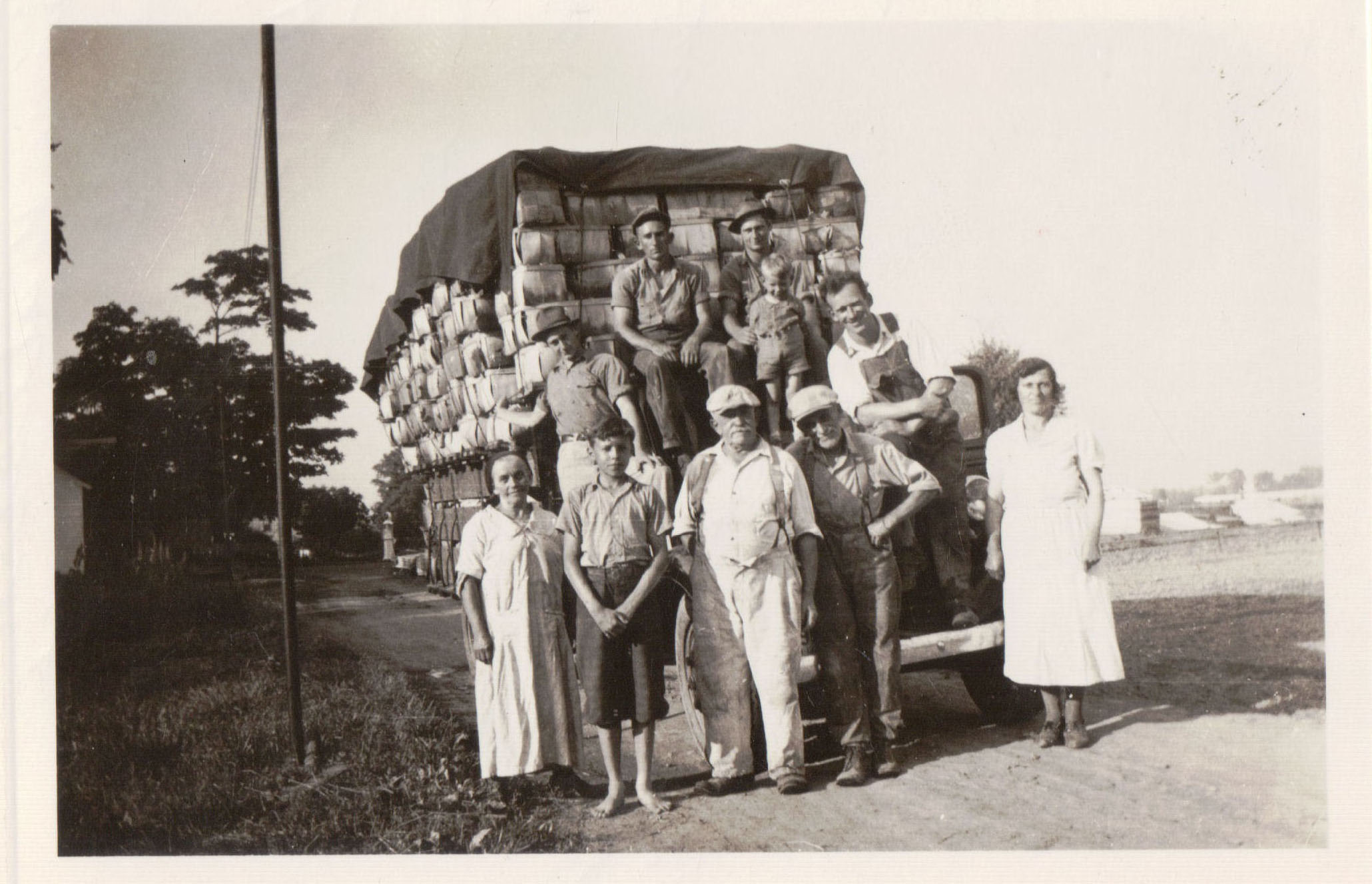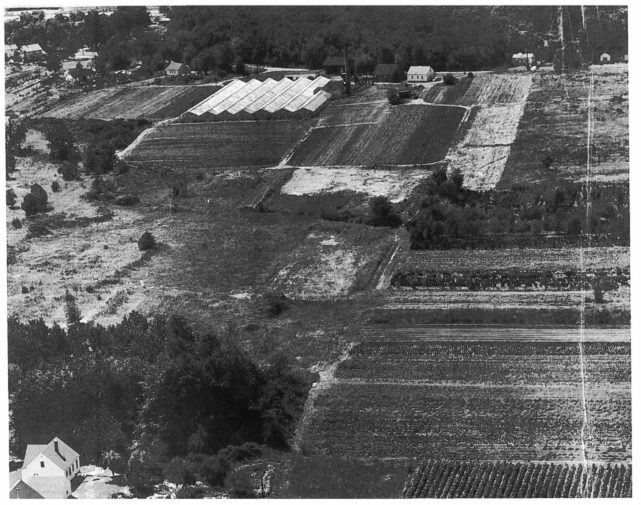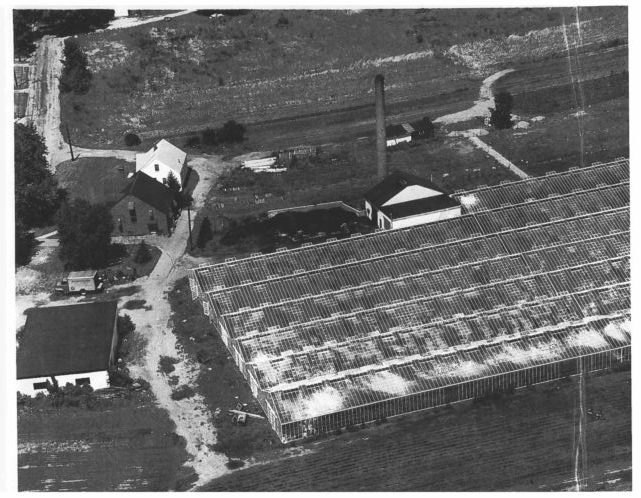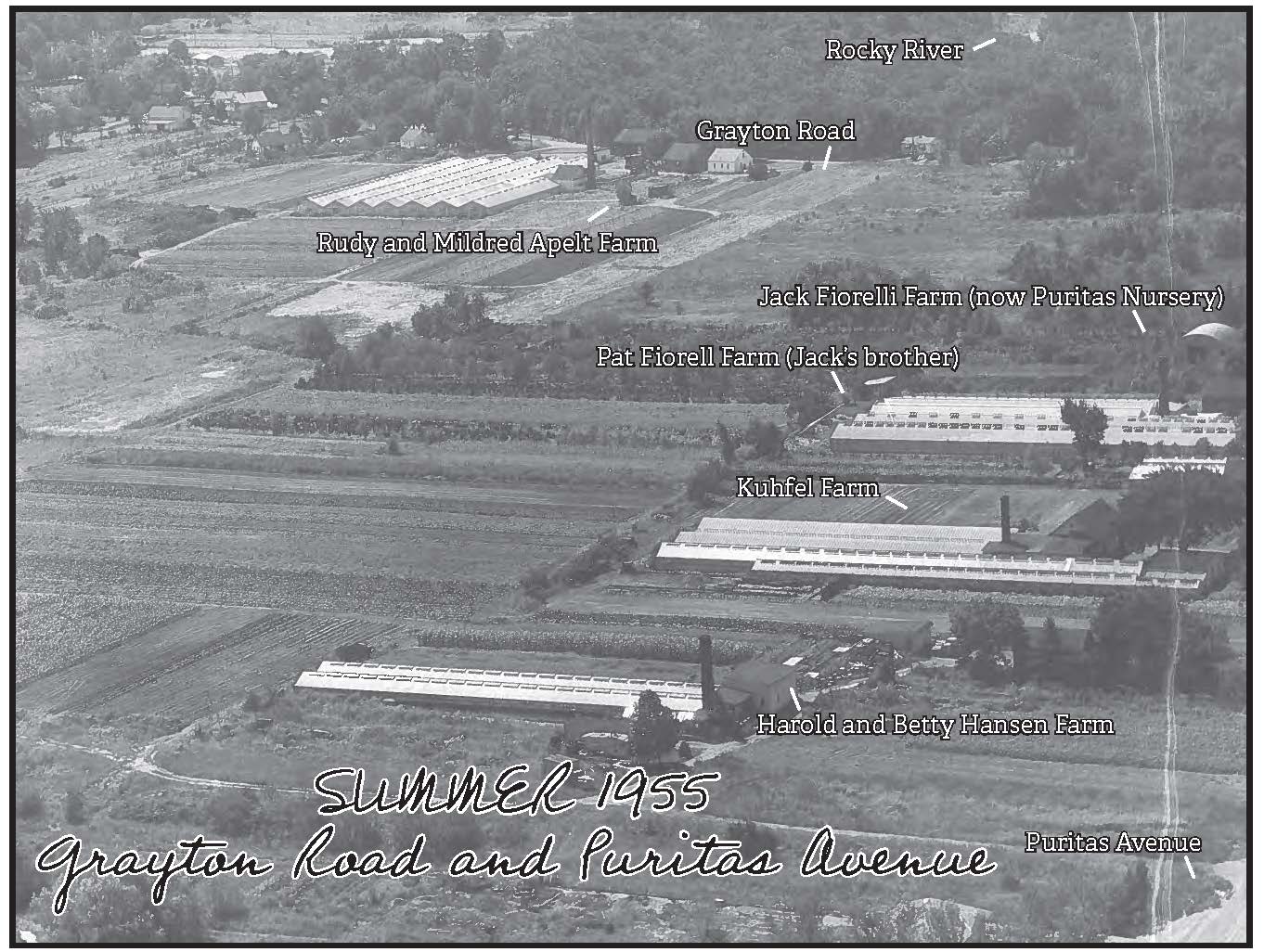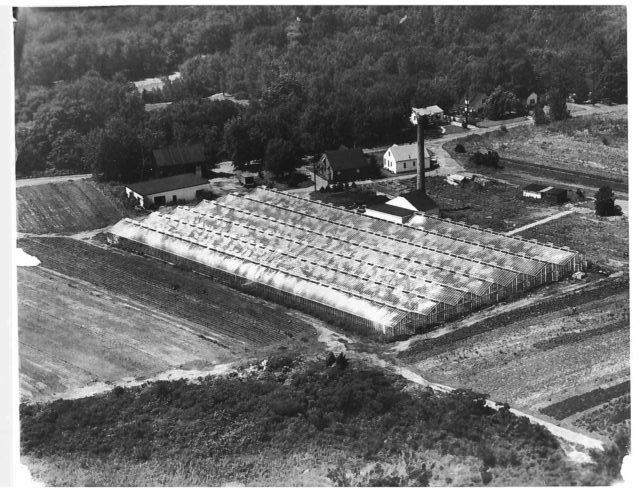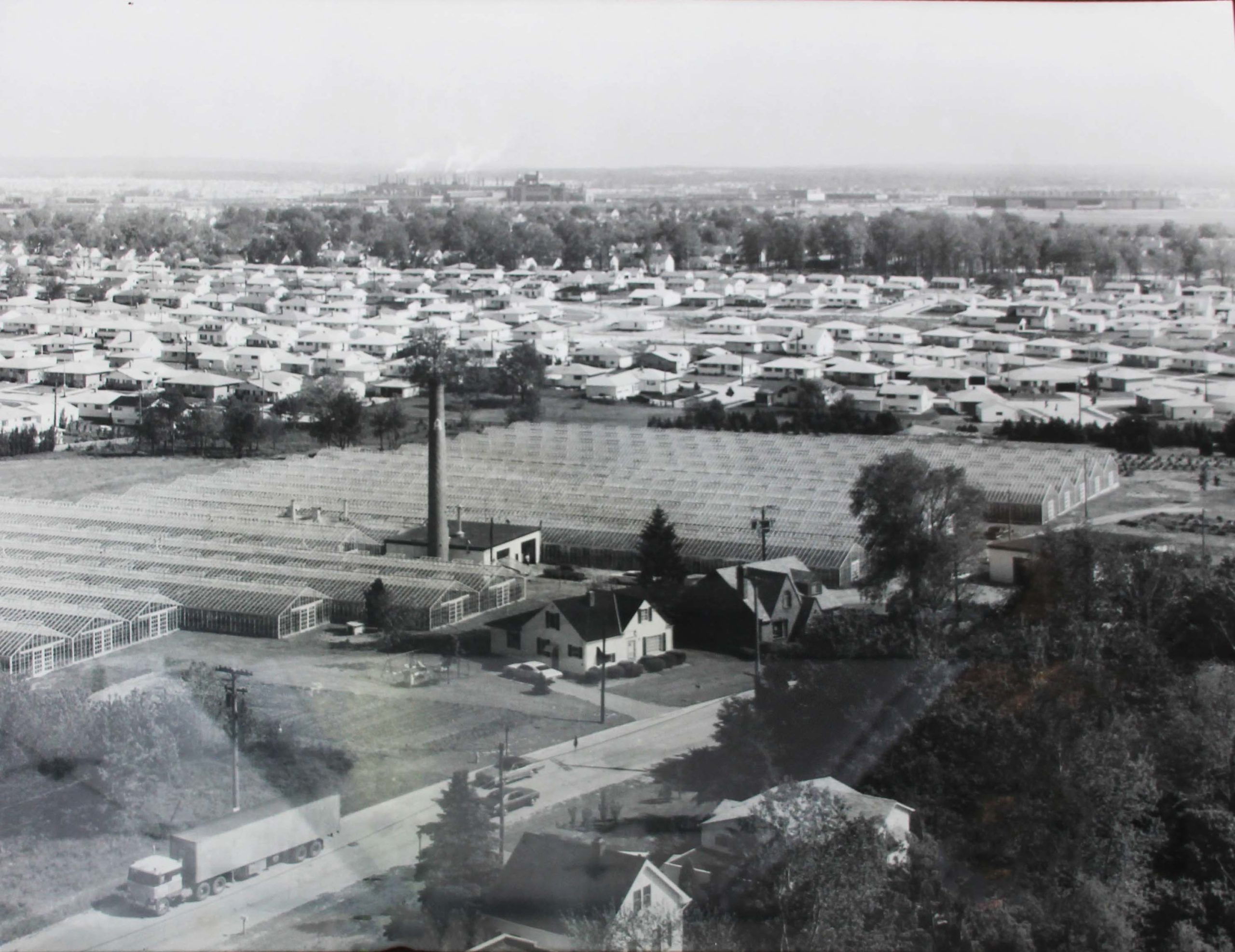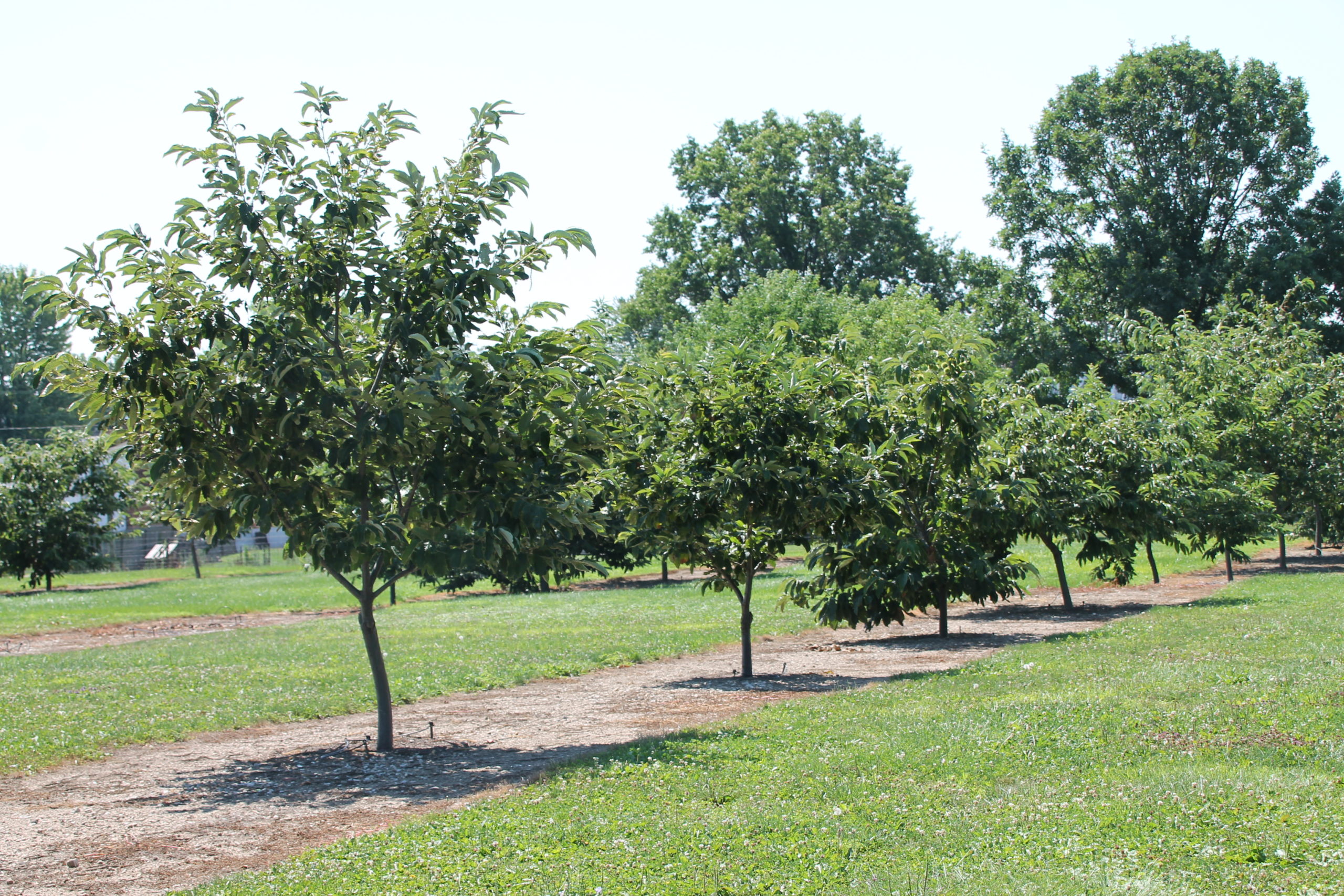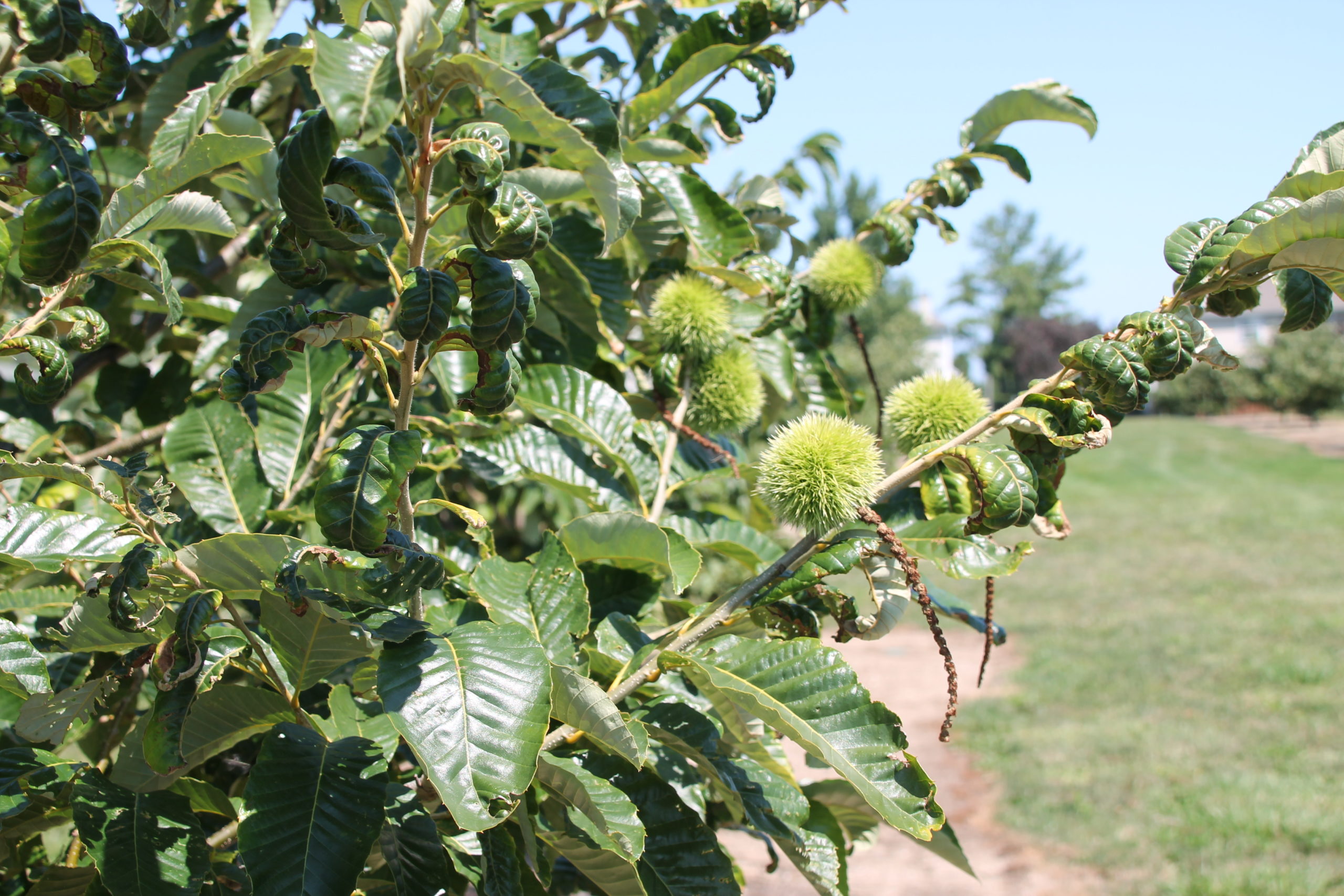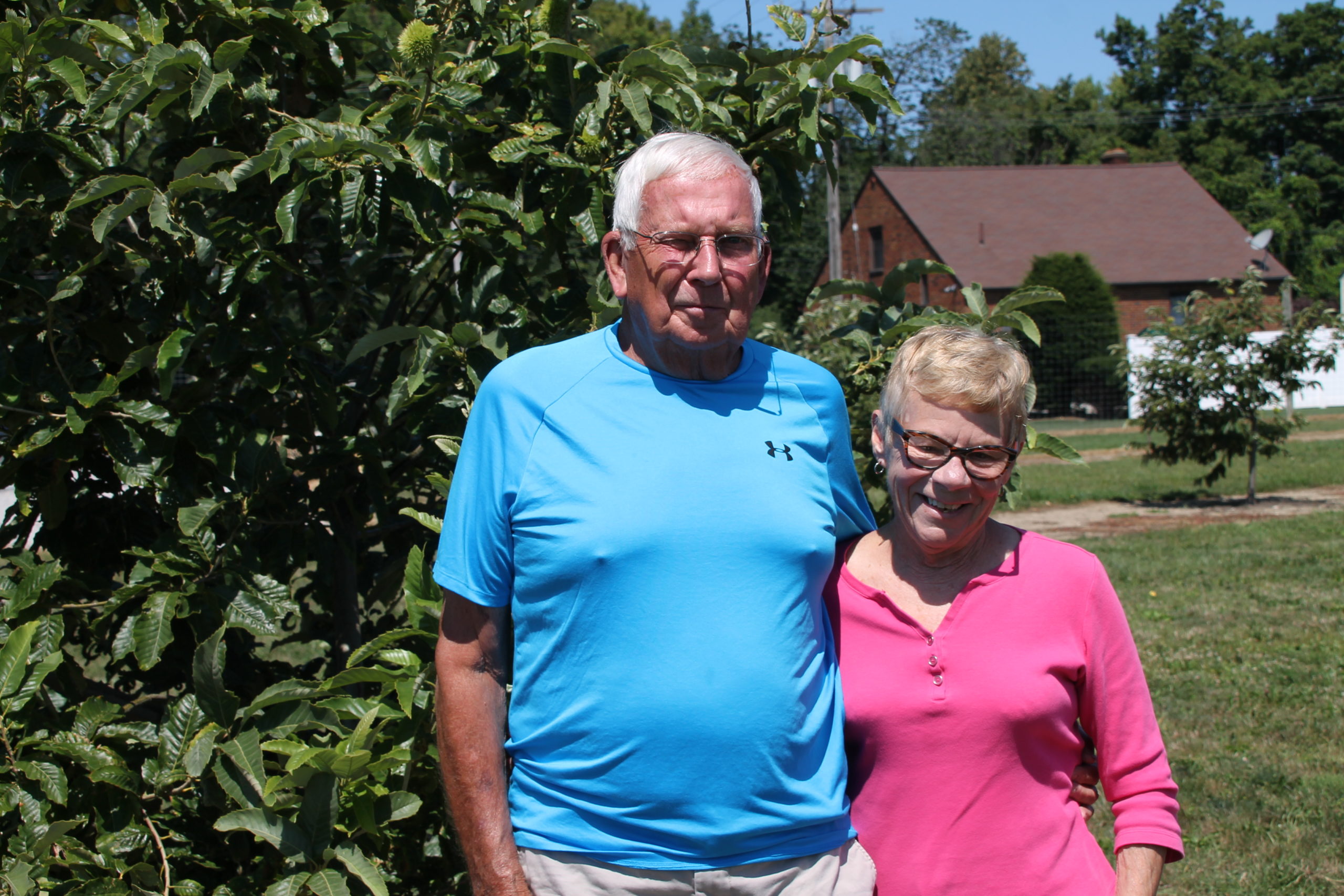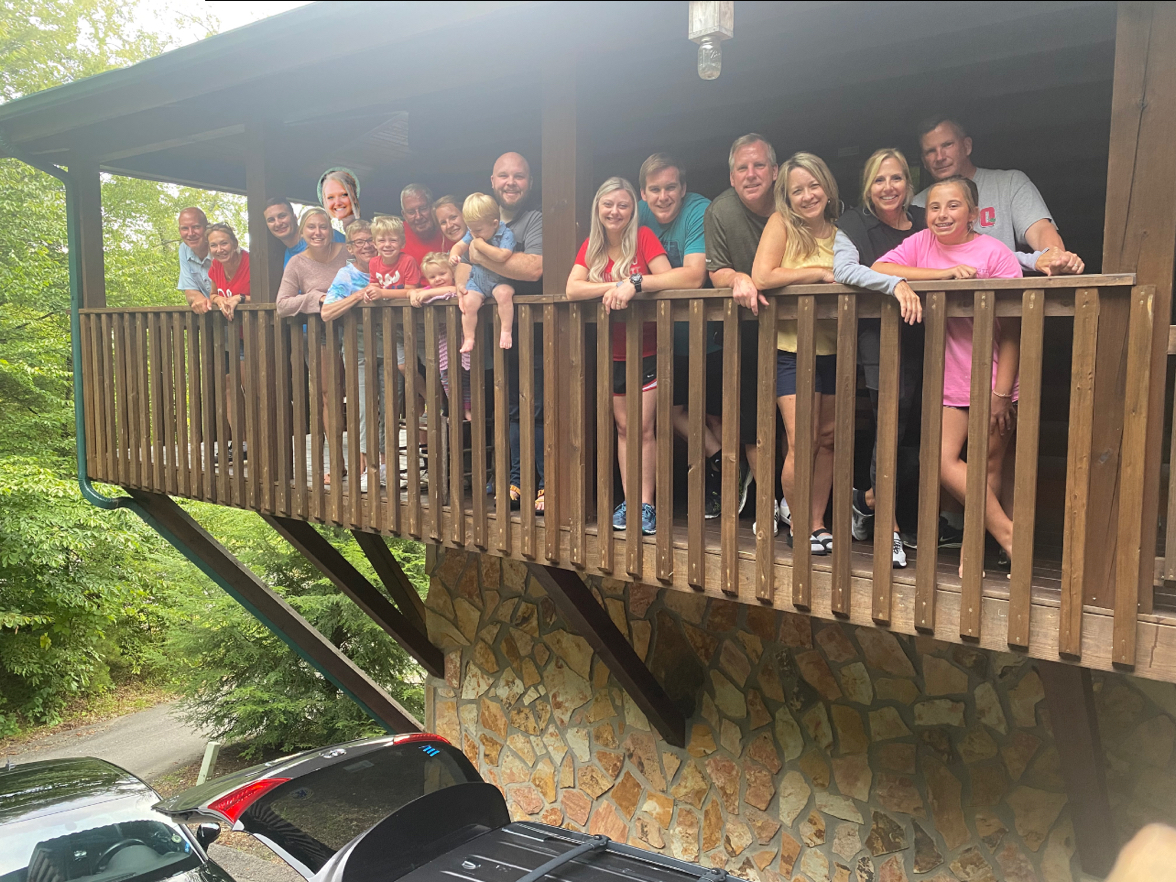This June, WPKND’s Explore West Park walkers received a behind-the-scenes tour from owner Alan Apelt of the RO Apelt Sons property on Grayton Road. Alan, born, raised, and current resident of West Park, reminisces about growing up on his family farm, living on Grayton Road, and having Puritas Springs Amusement Park down the street.
Unlike Grayton Road today, Alan shared that growing up, “If a car was driving down our road, they were lost.” Today, it’s hard to imagine this busy throughway as a dirt road and farmland. Alan’s family farm was one of many in West Park and throughout the City of Cleveland.
Alan and his wife Diane, both John Marshall grads and high school sweethearts shared their family’s history in West Park. The Apelt farm began in the early 1920s, when August Apelt and his wife Pauline, German immigrants, rented and then purchased the land at 4555 Grayton Road. They, along with their children, Gertrude, Reinholt, and Rudolph (Rudy) used the land to farm vegetables and to sell wholesale to nurseries.
August’s son Rudy purchased his father’s business and became the 2nd generation to farm the land in the late ’30s. In 1948, Rudy built the first greenhouse while continuing to farm outside as well. From the 1920s through the 1960s, Cleveland was home to over 50 businesses that farmed using greenhouses. During that time over 100 acres of greenhouses grew mostly tomatoes, leaf lettuce, and cucumbers within the city limits. Produce was sold throughout the northeastern United States through commission houses in the Northern Ohio Food Terminal, roadside stands, and the Central and West Side Markets. Rudy expanded the first greenhouse several times ending in 1959, with a total of 3.5 acres under glass. Rudy’s business was aligned with the booming greenhouse industry in Cleveland as citywide 400 acres were then under glass. Cleveland earned the title of “Greenhouse Capital of the Americas” during the 1950s.
Rudy and Mildred had three children, Ronald, Alan, and Elaine. Ronald and Alan worked the greenhouse and farm with their father, primarily growing tomatoes. Rudy Apelt passed away in 1959. His oldest son, Ronald, took over the business and was later joined by his younger brother Alan.
In 1985, Alan and Ronald started growing English seedless cucumbers in the greenhouse after having grown tomatoes for many years. The brothers continued to run the business until Ronald passed away in 1987; Alan continued as the sole business operator. In 2000, Alan turned the greenhouses into a hydroponic cucumber operation to keep the business updated with the latest greenhouse technology. Following 16 years in the hydroponic cucumber business, the greenhouses were
dismantled and taken down in 2016.
Alan and Diane were married in 1964; they have three sons, Ronald, Douglas, and Mark. Each son chose a career path away from the greenhouse industry; however, in the later years, after the greenhouses were taken down, Alan, Diane, and their three sons decided to continue to use the land for farming by planting 400 Chinese Chestnut trees, and in 2017 started what is now known as Buckeye Chestnut, LLC. Why chestnuts? Alan explains that “the chestnut trees are the easiest to manage on a day-today basis by himself.”
Due to the maturity of the chestnut trees, last year, 2020, was the first year that Buckeye Chestnut had a successful harvest. Approximately 100 pounds of chestnuts went to market. This year, they expect to double the harvest with continued growth. Chestnuts are harvested from the ground after falling from the trees, with many of them still enclosed in spiney burrs that require gloves to pick up off the ground. Once harvested and cleaned, the nut’s sweet flavor can
be enjoyed by roasting, baking, frying, boiling, or braising. With their potato-like consistency, they also can be used as a substitute for potatoes or pasta or added
to stuffing, soups, or desserts. The use of chestnuts is a rising trend in cooking.
The Apelt family’s vision for Buckeye Chestnuts is for the local community to be able to enjoy this land that has been used for over a century. The family is
working to farm the land and to host a chestnut “self-pick” each year during the harvest, which is typically mid-September to October. The family is planning
special dates for those who would like to “pick” and pay to enjoy locally grown chestnuts beginning this year.
Stay tuned for details, and they hope to see you out in the field!
